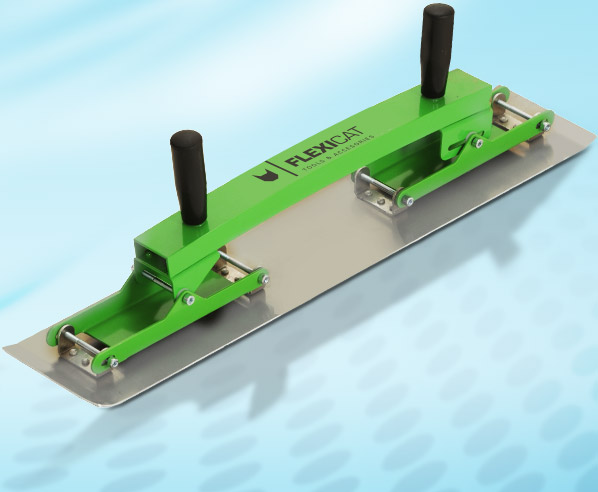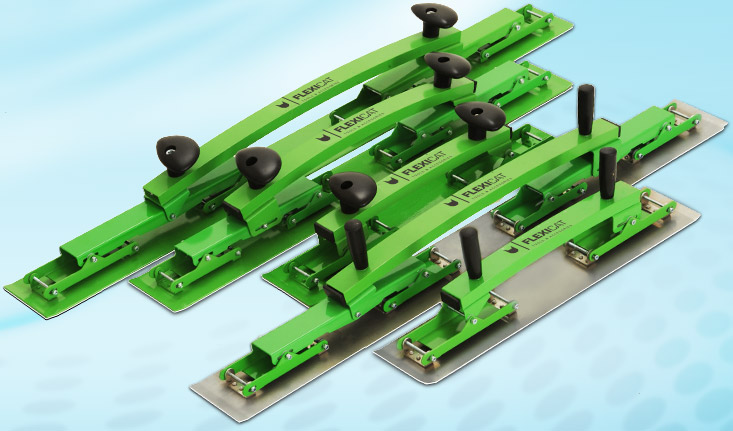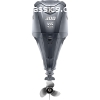
Let's be clear about one thing. I have no reason to write this review, either financially or otherwise. Flexicat Tools are not a sponsor of Fiberglassics and, because they can't lock down a U.S. distributor, they will probably never be an advertiser. Furthermore, even if they were an advertiser, I wouldn't benefit regardless. I hope this properly conveys the respect I have for these tools and why you should run, not walk, to the mailbox to see if your new tools have arrived yet.
As I've written many times in many places, fairing a curve is one of the hardest things to do when prepping for a new paint job. Your eyes will play tricks on you and convince you a surface is perfectly faired only to find out when you apply your shiny new topcoat, it's actually a wobbly mess.
It's by far, the hardest and most time consuming element of boat restoration and the learning curve is steep. If it's your first paint job on a boat, you have no frame of reference for when good enough is good enough. I've written about sanding blocks and fairing boards way more than I ever expected, but I still haven't been able to accurately convey how important a fair surface is to a final finish.
In this world, there are very few genuine advancements to look forward to. More often than not “New and Improved!” means “Old and Exhausted!”, but with new packaging. Among the few real improvements in my lifetime that come to mind are microwaveable popcorn, fabric softener, and dimmer switches. I can't find true fault with any of them and, maybe I'm easily impressed, but going back to the days of standing in front of a stove top and shaking a pan of popcorn kernels for ten minutes would be a punishment fit for a high crime. Today I can add another to my list.
Flexicat fairing tools have brought the pain of fairing a perfect curve and flat surfaces within reach of just about anyone. Both concave and convex surfaces are equally attainable with the same tools and the result is a near perfect surface after a single application of fairing filler. For professionals and DIYs alike, the expense of the tools are more than offset by the savings in materials and man hours.
OK, so now you're curious, right? Here's how they work and why they're a genuine improvement:
When fairing a curved surface, the application of the fairing filler often gets overlooked. The old stand-by is to use plastic spreaders to apply the filler using your hands and eyes to figure out the proper amount and placement of the filler. The next step is to sand the surface using a flexible fairing board to sand the surface fair. In this scenario, it is the fairing board that does the lion's share of the work.
As generally happens in this endeavor, multiple applications of filler are applied and then sanded away. Eventually, we get tired of the “sneaking up on fair” approach and just decide “It's done”. The result is often a reflection of how much time we put into this stage.
Flexicat tools are sold in a set; one tool for filling and one tool for sanding. The tools are identical except for the hook and loop surface on the sanding tool. The construction of the tools are unique to the industry. A flexible fairing board (or long board as they are sometime called) is a simple construction. It's basically a flexible surface with a handle at each end to “drive” the tool.
When conforming the traditional long board to a curved surface, uneven pressure is put at the ends of the tool. This creates an imperfect surface. In other words, if you're sanding the side of a curved hull with a long board, when you look at the sandpaper you've been using, you'll see that it's clogged up at each end, but the middle portion of the paper is pretty clean. That's because the pressure is directly under where your hands are.
What Flexicat tools do, by use of a double gimbaled construction, is spread the pressure evenly over the whole sanding surface of the tool. Instead of your sand paper getting loaded up at the outer ends and the middle portion under performing, the full surface of the sandpaper is making equal contact on the work surface.
By the way, the above example is true for a convex curve. If you were trying to fair a concave curve, the opposite would be true as the middle portion of the paper would get loaded up and the ends would be under used as you try to “squeeze” the long board together to make it conform to the inside shape.
Now imagine you have to fair a shape that goes from convex to concave fluidly, like on most boats. It's up to the long board user to adjust the pressure on the sanding tool to conform to this change in shape. As you can imagine, and like I mentioned earlier, it's a gigantic pain! It also takes a lot of time and applications of filler to get it just right. With the Flexicat fairing tools, the tool does the work for you. It goes from convex to concave without a hitch. It just makes the surface perfect regardless of its shape. All the user has to do keep the pressure even the whole time. So here's the best part; the part that doesn't get the attention that the sanding tool gets. The filling tool which like I said earlier is just the same tool but without the hook and loop sanding face on it, makes applying the filler just as easy as sanding it.
Imagine a world where you can mix up your filler, glop it onto the surface of the boat, then take the filling tool and, with a single pass, have it evenly and perfectly applied without requiring multiple rounds of filling, then sanding, then filling, then sanding... Apply it once, sand it once, that's it. You're done. The surface is fair and you're ready to move on to the next step in the painting process.
If I had these tools six months ago, I would not be in the position I'm in now. Instead of spending 60 hours fairing a boat and hundreds and hundreds of dollars in fillers and sand paper, I could have achieved a better result for half of the cost and a quarter of the time. That's how good these tools are.
I wanted to write this review of a new set of tools that I believe will take the mystique, the pain, the cost, and the time involved with fairing a boat out of the realm of the unattainable for the DIY crowd.
If you're interested in these tools, the website is www.flexicat-tools.com

On their site, you will find many videos and tutorials about how to use them and what they can do. The cost, at about $120 for the small tools (which are the only ones necessary for the average 15'-18' glassic) is a bargain at twice the price considering the savings after a single job.













